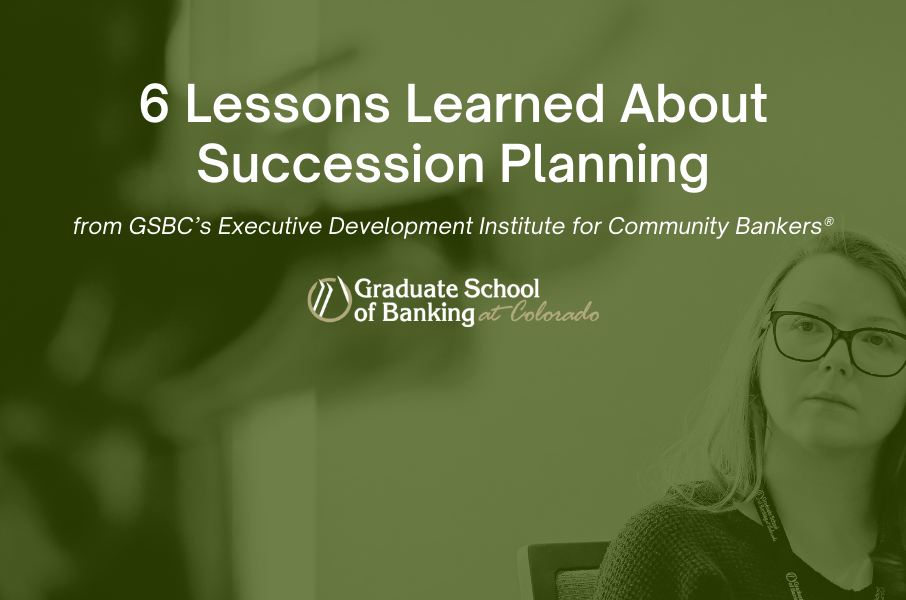by GSBC President & CEO Michael Stevens
As GSBC’s Executive Development Institute for Community Bankers® (EDI) has reached its 10-year anniversary, it’s warranted to reflect on what we’ve learned as a banking school about talent management and succession. What has helped inform these lessons are two unique aspects of GSBC’s EDI:
- Community banks needed a high-quality development program to make a strategic investment in the talent that’s already operating within the bank. This is a better solution than paying a search firm to look for that ideal candidate or having to sell the bank.
- The first course project that EDI participants complete maps out potential successors across the organization. The project includes a gap assessment to identify specific development needs for everyone who is assessed.
Lesson #1: Mentor & Develop
Up-and-coming executives have not fully appreciated their role in mentoring and developing staff. There are those individuals where mentoring is a natural part of how they manage and lead the organization, while others will need to have a clear expectation and deliberate program to execute.
Lesson #2: Over-Reliance
As bankers do an honest assessment of key roles and emergency back-ups, they discover a significant reliance on one or two people; the same names keep coming up as the answer to a critical vacancy. Organizations need these people, as they have vast knowledge of the bank, know how to get things done and inspire confidence; however, leaders need to be deliberate about spreading that experience and opportunity to more staff, as it is in the best long-term interest of the bank.
Lesson #3: Policy & Process
As bankers begin to create development and succession plans in their banks, they discover there is policy and process work to be done. A consistent and meaningful performance review process with goal setting and individual development plans provides a necessary foundation for all organizations. The bank will also need to ensure there is a competitive compensation plan in place with consistency and fairness in how it is administered.
Lesson #4: Assume Nothing
Bankers consistently tell stories about assuming someone would be interested in a certain senior level position only to find out that the individual is not. The opposite could also be true, meaning the senior banker is overlooking an interested employee. Effective succession management requires a lot of conversations to understand people’s career goals and aspirations. The organization’s leaders can then fully assess what is in the best interest of the organization and how to get there.
Lesson #5: Provide Leadership Training
Placing individuals who excel at performing one function in a leadership position and assuming they will figure the other functions out is a well-established but poorly executed practice. All individuals need support and training when they step into a supervisory and leadership role.
Lesson #6: Communicate
Talking about succession plans can be awkward since it is about individuals and is likely not 100 percent certain. While uncomfortable, without open communication with individuals and the organization, people are left wondering and anxious about their future. There is a significant risk of losing someone that the leader could see potential in but did not have the conversation. Open and consistent communication about process and timing provides surety to staff that there is a deliberate process to ensure decisions will be made in the organization’s long-term interest.
These are all revelations discovered by EDI students as they complete the coursework on talent management and succession planning. The issues vary by bank, as each organization is in its own life cycle. The above lessons provide a good framework to assess an organization’s succession plan status and areas for improvement.
EDI has been a transformative experience for many banks and bankers over the last 10 years, and GSBC is committed to continuing to evolve the program to meet the long-term needs of community banks.

